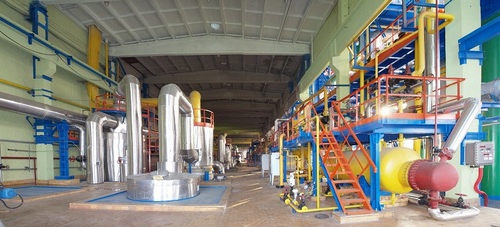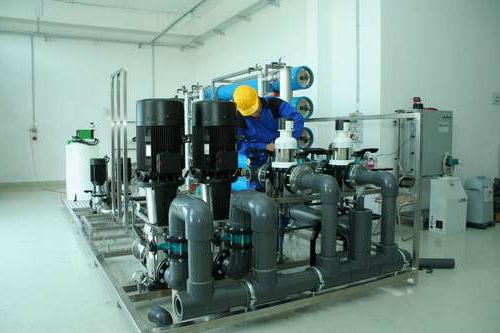Before the new legislation came into force, the commissioning of the construction site was carried out on the basis of various regulations depending on the type of structure. Since January 1988, SNiP began to operate. They established the order in which commissioning of an industrial facility was carried out. According to previous legislation, the document confirming the readiness of the construction was the act of the State Commission. Today a different order has been approved. Let us further consider how the facility is currently being commissioned. 
Resolution
This document today replaces the above acceptance committee act. Permission to put the constructed facility into operation is issued by the executive body at the federal, subject or local level. This document certifies:
- Completion of construction, reconstruction, overhaul of the structure in full. The foundation document is a building permit.
- Conformity of the finished construction to the project and site plan.
Commissioning a new facility: documents
The person carrying out the construction must apply to the executive body with the following papers:
- Statement.
- Legal documents for the land plot where the work was carried out.
- Building permit.
- Plot plan.
- The act of acceptance of the structure, if work was carried out under a contract.
- A document that confirms the compliance of the building with the requirements established by technical regulations. This paper must be signed by the developer.
- A document confirming that the parameters of the structure correspond to the project. This paper is signed by the developer or customer (if work is carried out under an agreement). Such a document is not provided during the construction of IZHS structures.

- Papers confirming compliance of the facility with the technical conditions signed by representatives of organizations operating engineering networks.
- A diagram showing the location of the structure and utilities within the allocated territory. The document must be the signature of the customer or developer.
- The conclusion of the State Construction Supervision Authority (if supervision is provided for construction) on the building's compliance with the project and the requirements of technical regulations, the conclusion of the State Control authorities in the field of ecology (in cases established by law).
Actions of the authorized body
Before issuing permission to put the facility into operation, the authority shall, within ten days, carry out:
- Verification of the submitted documentation (correct formatting, compliance of the information with reality).
- Inspection of the structure (this measure is not carried out if state supervision is provided).
- Issuance of permission to commission the facility.
However, the authorized body may refuse to satisfy the application. In what cases does this happen? 
Reasons for refusal
The authorized body may not issue permission to put the facility into operation if a discrepancy is revealed:
- The capital construction facility established in the building permit requirements.
- The parameters of the construction project.
- Site plan requirements.
The applicant may be refused if, within ten days from the date of receipt of the permit for construction, he did not submit to the authorized body:
- Information about the number of storeys, height, area of the planned building, engineering networks.
- A copy of the results of geodetic surveys.
- Instances:
- planning scheme of the plot, drawn up in accordance with the urban development plan;
- lists of measures to protect nature and ensure fire safety;
- other documents requested by the authority. 
If the refusal was caused by not providing any papers, then this violation can be corrected by presenting them.
Taxation
There is an opinion that obtaining permission indicates that work with the structure is completely finished, and it is suitable for intended use. The developer, acting as an investor, draws up the right of ownership, accepts the object for accounting as part of fixed assets. Registration cannot be carried out without permission from an authorized authority. Contribution to fixed assets can be carried out both before registration of the right to property, and after this procedure. However, many developers are interested in the question - is it mandatory to include an object in the OS immediately after permission to enter is obtained?
The investor independently decides whether the construction is ready for use at the stage when the document is issued. However, officials oppose this position. They believe that investors, therefore, delay the moment of paying property tax. And yet, in practice, the readiness of the facility for use is determined not by obtaining permission, but by a decision of the management of the enterprise for which the facility was built. Insisting on the earliest start of tax payments, officials in this case can in some way lose in quality, having undoubtedly won in the rate of receipt of deductions. In case of insufficient readiness of the construction, the developer will pay an incomplete amount on the basis of the law. An organization in this situation can do one of the following:
- Recognize the construction as suitable for use at the stage of obtaining permission to enter. After that, already carry out finishing work on the OS object.
- Finish the decoration before obtaining permission and decide on the suitability of the structure.

If the enterprise recognizes the building as an OS immediately at the time of obtaining permission to put the facility into operation, its value on the same date will be considered formed. This is carried out on the basis of paragraph 8 of PBU 6/01.
Commissioning: costs
Costs are not included in the consolidated estimates. Commissioning costs are compiled in a separate document. The cost includes:
- For the commissioning and commissioning of equipment by contractors.
- For fuel and energy and material resources that are necessary for verification and comprehensive testing of technical equipment.
- For the maintenance of engineering and technical staff and workers involved in the commissioning and commissioning.
- Unseen circumstances.
- Technical assistance of research and design organizations involved in the preparation of budget documents, consulting and expertise during commissioning, transportation of personnel and more.

Important circumstance
Permission to enter acts as the basis for registration of the structure, amending acts of state accounting. According to the definition of the Constitutional Court, the documentation confirming the readiness of the building does not include provisions governing the registration of property rights. Papers are purely technical in nature and establish the commissioning process.
Controversial moment
It is also necessary to pay attention to the period when, instead of the act of state acceptance, permissions began to be issued. This circumstance is very significant, since the construction of many facilities was carried out before the adoption of the new Code, and they were ready after that. According to Art.9 of the Federal Law governing the implementation of the Group of Companies, the Code applies to relations relating to reconstruction, construction and design that arose after its approval. Objects started before its introduction are subject to provisions regarding obligations and rights that appeared after its adoption. In other words, since the above relations on the construction of the building arose before the GrC was introduced, and the completion of the work and the need to obtain a permit, after that, the reception and launch of the building should be carried out in accordance with the requirements of Article 55 of the GrC. 
Permission form
The plan is approved by government decree. The order of the Ministry of Regional Development establishes the procedure for compiling a permit form. The document must contain information about the construction, which is necessary to amend the acts of state accounting (for reconstructed and repaired buildings) or registration. Since when issuing a permit by an authorized body, a conformity check is carried out during the construction of an urban development facility and other rules and regulations, there is no need to present other documents except those included in the list above.








